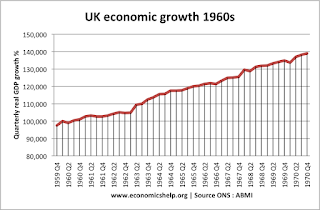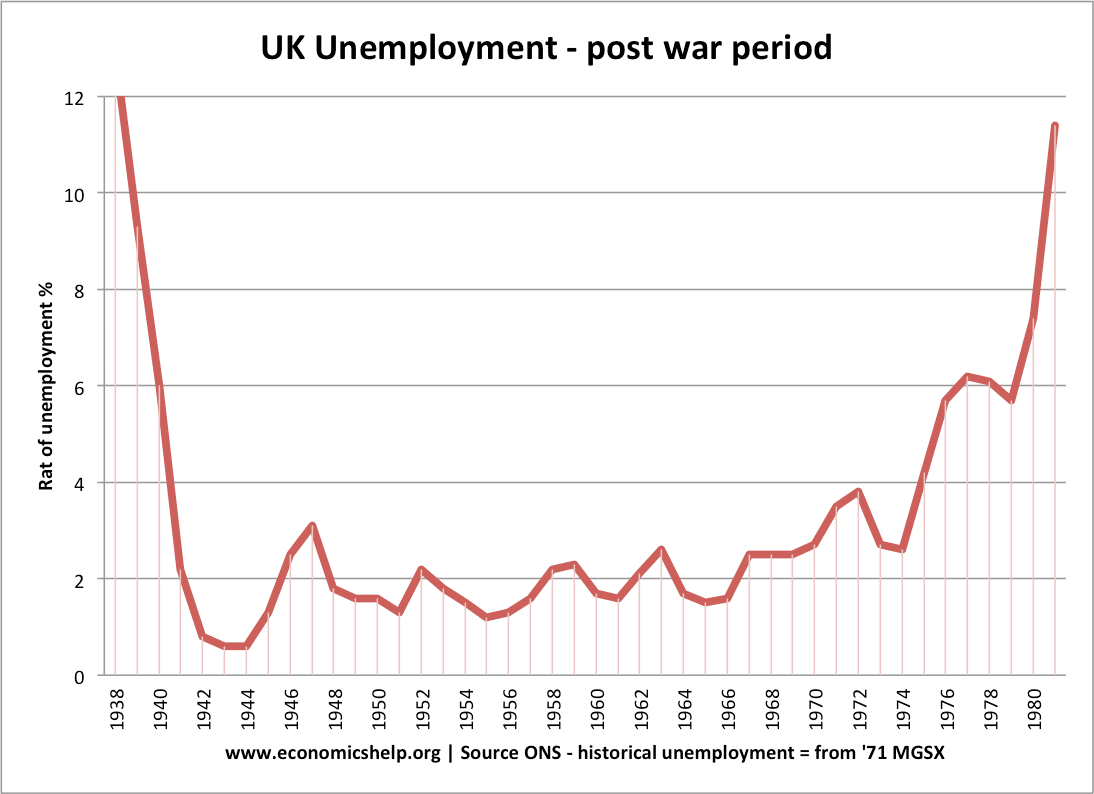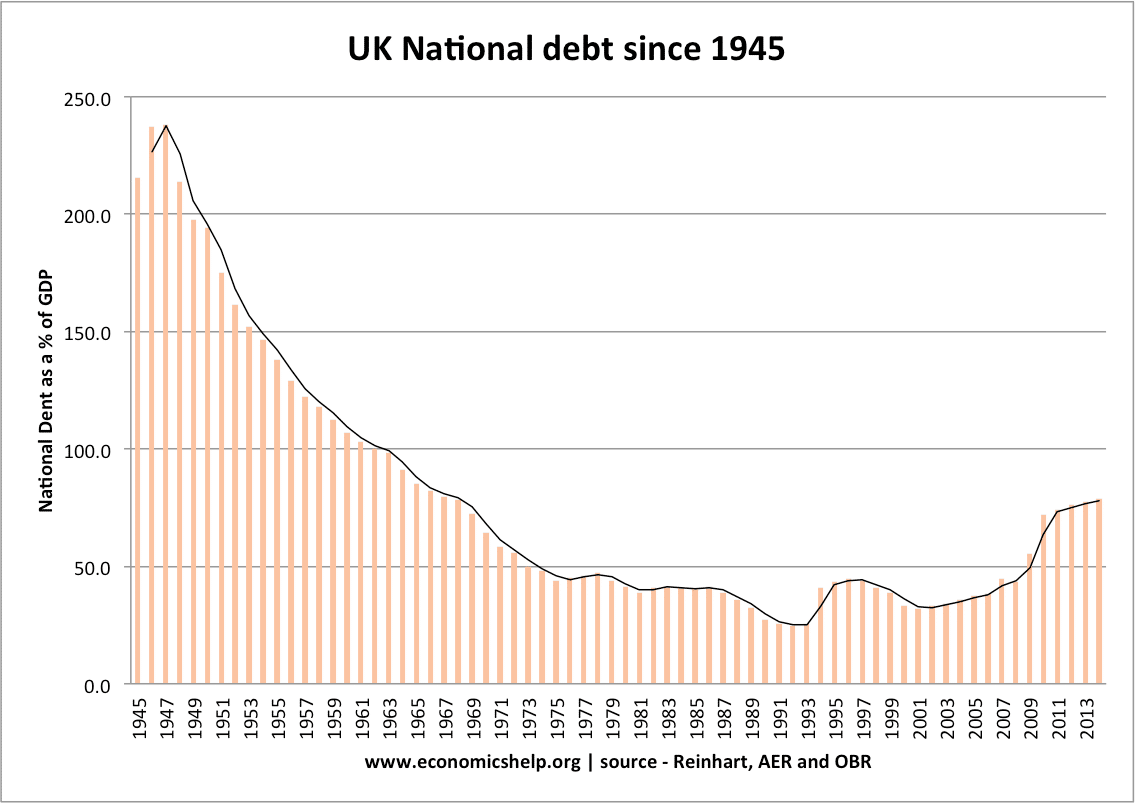Rising standards levels (1960s)
Rising standards levels (1960s)
UK economic growth in the 1960s. There were
short dips in output, but these were not sustained. The economic growth
translated into rising living standards, with households able to purchase
'white goods' or cars. There were new markets emerging, for example, teenagers
had greater disposable income to spend on leisure.
 There was also a revolution in transport. At
the start of the 1960s the households didn’t have a private car, only can use
public transport. But at the end of the 1960s, car ownership rates had risen.
The first motorway was built in 1958, and into the 1960s there was a higher
number of roads, later the government create a road building program. Also the
families want to own their own house, so in the post war were a boom in house
building occurs, the price drop and almost the majority of families can
purchase a house.
There was also a revolution in transport. At
the start of the 1960s the households didn’t have a private car, only can use
public transport. But at the end of the 1960s, car ownership rates had risen.
The first motorway was built in 1958, and into the 1960s there was a higher
number of roads, later the government create a road building program. Also the
families want to own their own house, so in the post war were a boom in house
building occurs, the price drop and almost the majority of families can
purchase a house. Declining competitiveness
However, despite higher economic growth, the
UK performed relatively poorly compared to our major competitors, such as
Germany, Japan and US roared ahead UK productivity growth was relatively lower
due to several factors. such as:
- Lack of willingness or ability to innovate
- Poor industrial relations with a growing
number of days lost to strike action. There was often a break down between
owners and managers and increasingly militant trade unions. British workers were prefers working than rule or considering strike action.
- Barbara Castle as Labour minister tried a moderate reforms of trades unions. However, the unions effectively lobbied Labour ministers and the reform bill was blocked.
- Complacency. Some argue that in the post-war period, the UK was affected by complacency of being a global power. This complacency was in stark contrast to the defeated countries of Germany and Japan, who put greater energy into business. The UK was also hampered by coming to terms with letting go its Empire and trying to join Europe. In the 1960s, two applications to join the EEC were vetoed by the French.
- Lack of public sector infrastructure. Burdened by high post-war debt, the UK struggled to invest in new transport and technologies. While the rest of the countries rise in technologie, UK was conservative and doesnt invest until the entrance in European Community.
Balance of Payments
In the 1960s, the trade deficit was seen as a
vitally important economic statistic, with important politically
considerations. Unfortunately, for the Harold Wilson government of the 1960s,
the UK trade deficit was embarrassingly large - a result of the decline in
competitiveness and a wish to retain a strong pound. Campaigns like 'Buy
British'
were surprisingly prominent, but, ultimately failed to make any real dent in
the trade deficit. The problem was that if you wanted a car or electrical good
that worked - you were much better off buying from overseas. If we made jokes
about Skodas and Ladas in the 1980s, British Leyland was the butt of many jokes
during 60s and 70s.
Full employment
 Despite the economic weaknesses of the 1960s,
it was still an era of full employment and rising real wages. Compared to the
rest of the Twentieth Century, the 1950s and 60s were a rare period of full
employment. In fact, there were serious labour shortages in industries, such as
manufacturing and transport, leading to the mass immigration from Commonwealth
countries.
Despite the economic weaknesses of the 1960s,
it was still an era of full employment and rising real wages. Compared to the
rest of the Twentieth Century, the 1950s and 60s were a rare period of full
employment. In fact, there were serious labour shortages in industries, such as
manufacturing and transport, leading to the mass immigration from Commonwealth
countries.Inflation in the UK in the 1960s
UK inflation in the 1960s was relatively low. This was helped by low global inflation. However, towards the end of
the 1960s, the State start to see a rise in inflation, the rise in inflation was
in part caused by devaluation, which tends to push up prices because imports are
more expensive.
Devaluation of 1967
Throughout the 1960s, the government were committed
to keeping the value of the Pound high. This led to relative high
interest rates and intervention in foreign currency reserves. However, efforts
to keep the Pound strong, ultimately failed, and in Nov 1967, the government
were forced to devalue the Pound. The Pound was reduced from $2.80, to $2.40.
It was considered a political embarrassment, though it was necessary given the
declining competitiveness.
"It does not mean that the pound here in Britain, in your pocket or purse or in your bank, has been devalued" Harold Willson, ex prime minister
But, it did cause the price of imports to
rise and contribute to rising inflation. It was also hoped the devaluation
would tackle. However, although it proved a temporary boost
into the
competitiveness. It could not tackle the fundamental issues, such as
productivity and labor relations.
National Debt in post war period
After the Second World War, the UK was left
with huge debts. National debt as a % of GDP exceeded 200% of GDP in the early
1950s. Britain was reliant on loans from the United States. Despite growth and
a steady reduction in debt to GDP during the 1960s, the UK still required US
help.
Undoubtedly, had it not been for the
necessity of borrowing from the US, Harold Wilson would have been freer to be
more critical of the Vietnam War - as he told his cabinet on why he would not criticize
the war - 'You can't afford to kick your main creditor in the balls' - or words
to that effect.


Comentarios
Publicar un comentario